The Best Way to Keep your Garden Weed-Free: Ruth Stout Method
When we walk on top of the garden mulch in the summer, we sing “No weeds, no weeds, no weeds in our garden!”
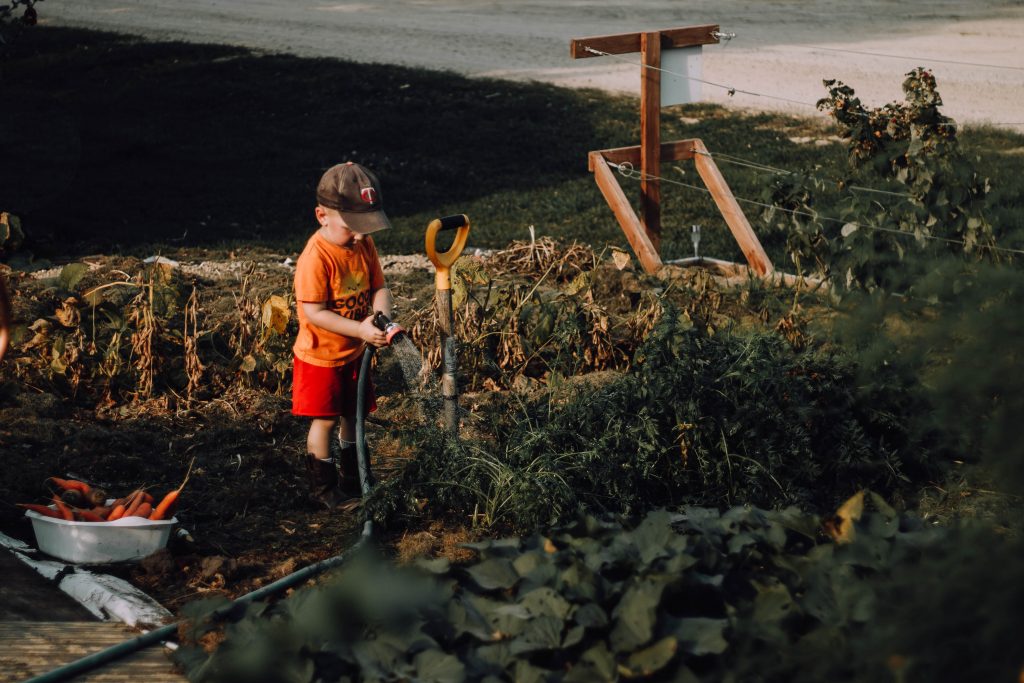
“After you have mulched for a few years, your soil will become so rich from rotting vegetable matter that you can plant much more closely than one dares to in the old-fashioned way of gardening.”- Ruth Stout
Would you like to garden with ease?
How about weeding, would you like to just not have to do that?
I bet you’d love to watch your beautiful produce standing alone in your garden (not nudged between weeds).
In this midst of growing season, here is – in our opinion – the most effective way to garden! Read on my friends, your weed-free gardening ventures are about to get EASIER!
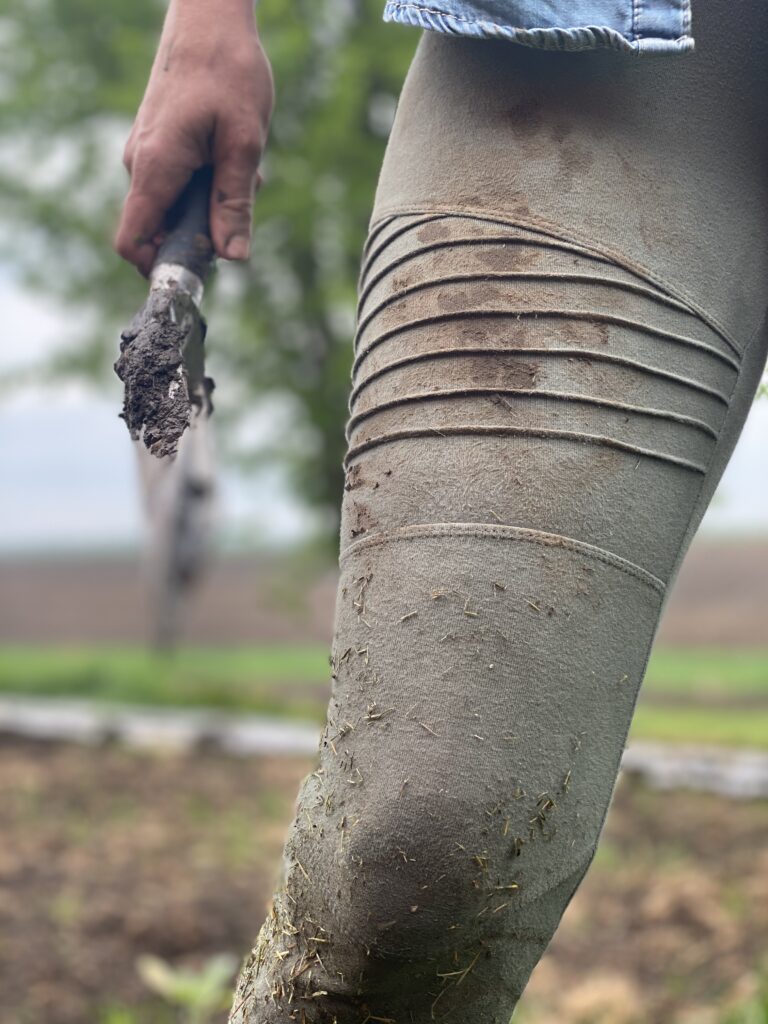
What is The Garden Mulch Method (aka Ruth Stout Method)?
Nicknamed the “Mulch Queen”, Ruth Stout was born in the United States in 1884. What is the Ruth Stout method of gardening you ask? As early as 1920, she realized that all traditional methods of working with the soil (digging, weeding, watering, plowing, hoeing), could be replaced by simply adding a layer of hay on the ground. In this method, you simply put garden mulch right on top of the soil – no extra materials needed. You can use this method in both your flower and vegetable garden!
She wrote a chronicle about this particular approach for the magazine Organic Farming and Gardening from 1953 to 1971. She also published several books about her methods.

For us, Garden Mulching started as an accident
We were new to the chicken coop world 8 years ago. In early February I found myself with nowhere to go with the straw, manure, and sand from our chicken coop.
I mean we live on a farm so really, I should have had plenty of options. But I thought, what do people do with this stuff anyway? Where could I go with this compost pile?
So, I just put it in my garden! (The closest place to my coop, that seemed like a good close spot to wheel my wagon.)
I’d mow the lawn with my grass bagger and toss the bags of grass into the garden.
Fall would come and I’d use the mower to crunch up the leaves and toss it into the garden mix.
We even burn wood, paper, and cardboard in the garden and mix in the ashes to the soil in the early spring.
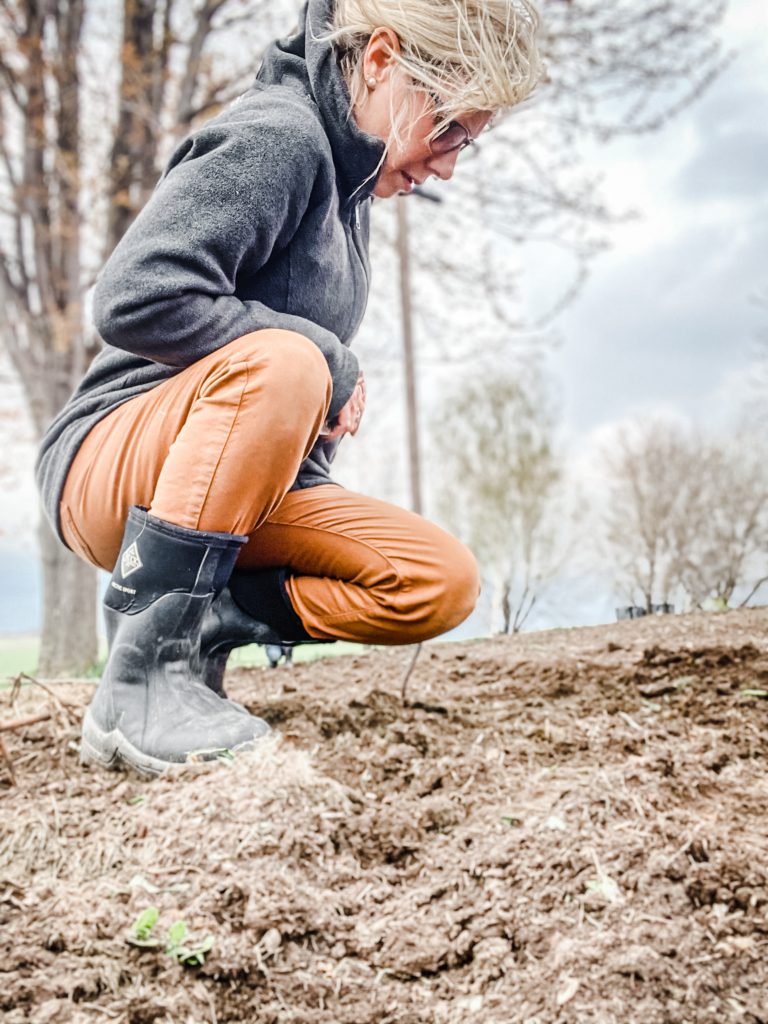
To Till or Not to Till?
Ruth comments that one year she got sick of waiting for the “plow-man” to till her garden and decided to just stick her seeds right into the mulch. Lo- an-behold, this little mistake turned out to be a brilliant no-till gardening method! Ruth and I, we were meant to be friends!
Stout emphasized the simplicity of her methods and the way the gardener benefits from extra free time and rest. A no till garden that produces the same results sounds great to me!

Plant, mulch, then Rest! This is the best part, ya’ll!
We put in all of our time and efforts at the beginning of the gardening season- planting and mulching. Then, when we decide garden burn-out has set in, we retreat to other projects. When we head back to the garden for a look, it’s heavenly to see the produce flourishing in amazing moist soil and practically no weeds! For any annual weeds / perennial weeds all I do is walk through, coving up any weed growth that might have snuck through with mulched grass, and step on it as I walk by, compacting it down.
Quite simply, the method consists of keeping a thick layer of hay mulch permanently on the soil. We can sum this up as the “law of least effort”, where we allow nature to do most of the work for us, and we stop needlessly interfering. The less work we do as humans, the more we allow the plants’ natural processes come to fruition.
It’s easy to see with the titles of her books: Gardening Without Work, I’ve Always Done It My Way, and How to Have a Green Thumb Without an Aching Back.
Ruth Stout didn’t invent the technique of permanent mulching (nature has been doing it for millions of years!), but it seems that she is the first who wrote about the topic. She was also an influence for other figures in the ecological gardening movement, including Emilia Hazelip who developed the “synergistic gardening” approach (which later evolved into the “self-fertilizing gardening” approach in Québec).

Materials you’ll need to make this Garden Mulch
Extra grass, straw, hay or leaves
Equipment needed to Mulch your Garden
None needed! Only your own two hands! However, a trowel, a fork, a spade, and a hoe can sometimes come in handy. These are our favorite garden tools!
Garden Inputs
In terms of the materials needed, Stout bought the hay that she mulched with. We can never have too much! It’s a good idea to have some extra set aside. Anything that doesn’t decompose too quickly can also be used as mulch. This includes organic material such as: old hay, straw, pine needles, corn stalks, grass clippings, seaweed.
Every time we mow the lawn, we use our bagger on the parts of the lawn where we play the most. This keeps the grass out of the house and the mulch in the garden!
We fill in the thinner areas in the gardens where the persistent weeds might have seen the light of day and started creeping up, with this mulched grass. Again, just place it right on top of the weeds.
From time to time, Ruth Stout would buy cotton meal or soy meal as a complementary source of fertility. She would spread about 5 pounds over 100 square feet.
Other than that, the only inputs for the garden were seeds.

Starting the garden
For Ruth Stout, the best time to start this type of garden is last year! As time passes, the soil quality improves and it becomes more fertile. She believes that the results really kick in after a few years of growing this way. To the frequent question from her readers, “When should I start to mulch?” She would answer “Now!”
More precisely, Stout recommended starting a garden in the summer or the fall. Early in the springtime, the soil is still cold, and the mulch would tend to keep the soil from warming up. If we cover the ground in the autumn with 8 inches of hay, it will be ready for seedlings in the springtime.
How to plant
For planting seeds, ensure that they’re in direct contact with the bare soil. In terms of the distance between seeds, use the distances recommended in traditional gardening methods. Nevertheless, Ruth Stout said that the plants can be more closely spaced after a few years of using her method. For transplanting seedlings, use a trowel or a small shovel.
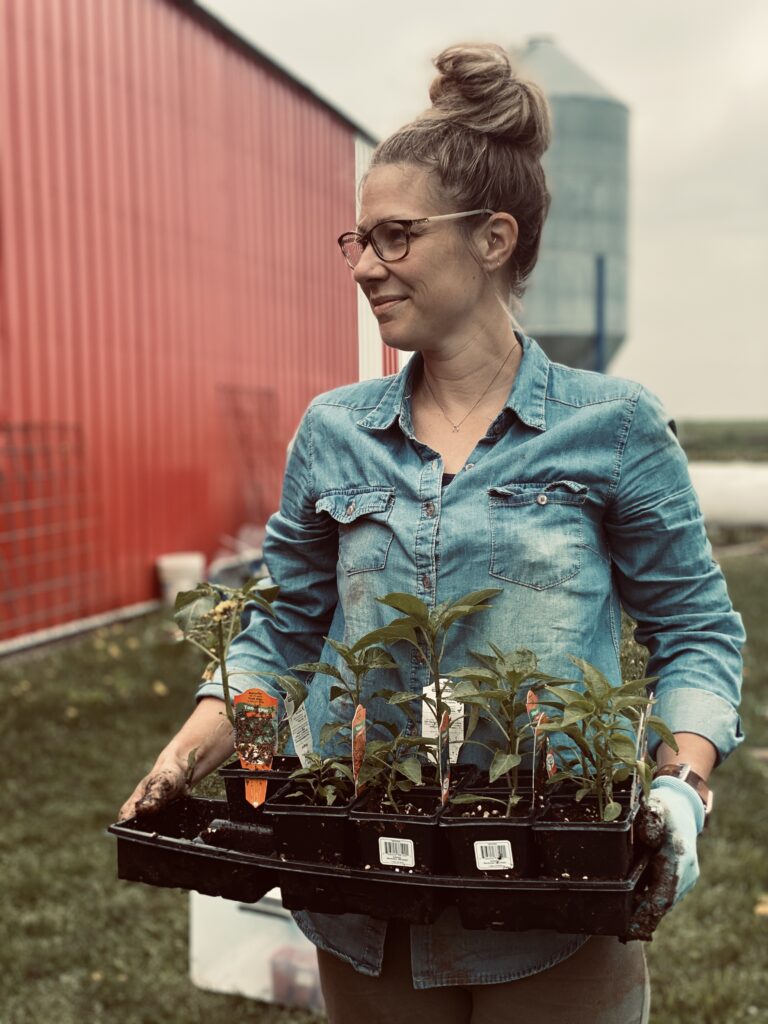
Why You’ll Love Garden Mulch
- I love the saying “a stitch in time saves nine”. If you can do a little bit at the beginning, to save lots of time later, it’s always worth doing!
- Weeding with mulch will help your soil regenerate and grow.
- This is a fantastic way to use the grass from your lawn mowers bagger.
- Easy to understand
- No machinery needed
- Mulch retains moisture, which eliminates the need to water
- Above all: little work for great results! This takes effective methods of gardening to a whole other level
Comments and criticisms
Ruth Stout realized that her system required large amounts of organic matter and was better adapted to small surfaces. What’s more, the visual look of her gardening system is in contrast with traditional methods and might be an aesthetic problem for some people.
And, even if Stout doesn’t mention it herself, to create a more dynamic ecosystem and increase the real autonomy of our garden, especially related to garden “pests”, we could consider adding trees and ponds to the system.
Tips about Garden Mulch
- To the question, “How much hay do I need?”, Stout answered, “Twice as much as you think!” More specifically, she recommended a thickness of 8 inches. This may seem thick, but with the effects of rain and decomposition, soon enough it will be only 2-3 inches thick.
- For beginning a new garden with the Ruth Stout System, the hay can be added directly on an existing lawn. Do not remove the underlying grass and plants: they’ll decompose under the hay and add to the fertility of your soil.
- In the case of converting a traditional garden into a Ruth Stout style garden, she recommends planting in your usual manner and then adding mulch around the plants.
- Between the rows of vegetables, she recommends adding fallen leaves from trees.

Questions People are asking about Garden Mulch
Is the method of weed prevention chemical free?
Absolutely, yes! Because this isn’t a weed killer method, but instead a weed control method, you do not need to worry about any chemicals or even extra equipment

What does Ruth Stout say about Crop Rotation?
In her book “No-Work Garden”, Ruth Stout’s co-author, Richard Clemence, recommends a rotation of strawberries, sweet corn, and potatoes: three productive cultures that are easy to install with the Stout System, and that can bring an income through the sale of these popular foods. To learn more, here is a snippet from Ruth Stout’s book that describes the rotation.

What does Stout say about Cold – Weather Crops?
For the cooler seasons, Stout recommends choosing cold-resistant plants like kale, that we can harvest even when there is snow… or parsnips, that we can leave in the ground all winter and harvest in the spring. To help them get through the winter, we can cover them with a layer of hay.
Stout also suggests growing squash (for example, buttercup and blue Hubbard), since they preserve well indoors during the winter months.
How to buy or save seeds according to the garden mulching method?
Ruth Stout had two recommendations. First of all, she recommended buying new seeds from a reliable seed producer, which helps to support their business. And since they are specialized in the production of seeds, it would be ambitious to think that we could do better ourselves. At the same time, she recommends that gardeners use their own seeds.
The idea is to benefit from “volunteers”: leaving good-quality plants and good-quality fruits in place at the end of the season, so they can regrow the following spring. Ruth Stout nevertheless had the habit of transplanting volunteers to the place where she’d like them to grow the following year.

What about weed seeds?
When we use hay, it’s best to avoid working the soil. If the hay contains weed seeds, as long as we keep piling on more hay as it decomposes, the seeds will be buried and likely won’t germinate.
It’s usually when we work the soil that the seeds are brought up to the surface, which leads to their germination.
If we see weeds that are germinating and growing, we can pull them out (Ruth Stout gardened with 100% hay, so instead of pulling them out, she’d cover the weeds with more hay).
If you’re worried, you can leave the hay outside of the garden for a few months to start the decomposition process before adding it to the garden.
What can you grow using the Ruth Stout Method?
We plant everything on our farm using this method – veggies to flowers, you name it! You can grow anything you’d like to. The crops known to work “best” with this method include foods like potatoes, tomatoes, garlic, onions, eggplants, and cucumbers.
Check out our blogs on garlic! How to Grow Garlic, How to Harvest and Store Garlic, How to make Garlic Powder, and How to make Garlic Scape Compound Butter
What can I put in my Mulch using the Garden Mulching Method?
“Can I use wood chips for Ruth Stout Method?” or “Ruth Stout method with leaves” are some of the most common questions asked. When it comes to the Ruth Stout Method and gardening mulch, you are free to use what you have in your garden – anything that doesn’t decompose too quickly, that is. To keep this low cost and low effort, we use what is naturally in our yard: grass clippings, etc.

Tasks in our garden
Springtime
- Add grass/hay if there isn’t enough.
- Sow and transplant.
- Harvest what’s still growing from last year.
Summer
- Stake climbing plants (ex. climbing beans), and plants that have difficulty supporting their own weight (ex. tomatoes).
- Weeding consists of laying the plants down and covering them with hay.
- Add hay if there isn’t enough.
- For the cabbage family, we suggest using Epson salt to counter cabbage butterflies.
- Harvest
Autumn
- Harvest.
- Plant garlic.
- Everything is left in place. Nothing is ripped out. We just cover everything with grass/ hay.
- Clean out the chicken coop and add straw/ chicken and cow manure to gardens
Preparation and Storage
Learn what we do to preserve and store our produce to get it ready for the more hectic times of the year, here!
Spring Planting: The Video!
Check out our other gardening posts:
How to make your own Carrot Seed Tape
How to quickly install Drip Irrigation for your Raised Beds
Spring Planting on the Dairy Farm

Pin this for later!
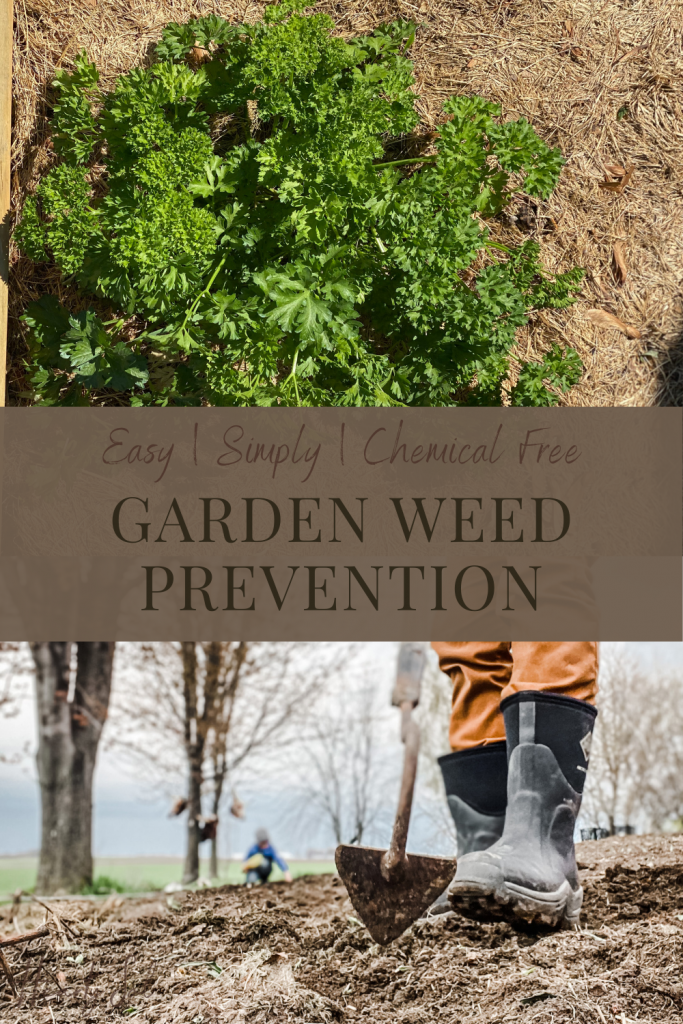
- Natural Laundry Whitener | Whiten your Clothes without Bleach
- Busy Farm Season Meals: 10 Easy Dishes We Prep for Fair Week
- The Best Soft Sourdough Sandwich Bread
- The Ultimate Summer Farmhouse Reset | 10 Tips for Success
- The Best Homemade Laundry Soap Recipe
Do you have a favorite method of gardening or tool, that works well? Share your gardening secrets below!
Comment below!

Affiliate Disclosure & Content Disclaimer
This post may contain affiliate links from a paid sponsor, Amazon or other program. When you use these links to make a purchase I earn a small commission at no extra cost to you. This allows me to continue creating the content that you love. The content in this article is created for information only and based on my research and/or opinion.
Emily T.
Leave a Reply
DAILY INSPIRATION ON THE GRAM @hearty.sol
it's hip to be square!
Having weeds in one’s garden is the worst thing that can happen to the garden for sure. I think that weeds tend to destroy the sheer idea of a good garden.